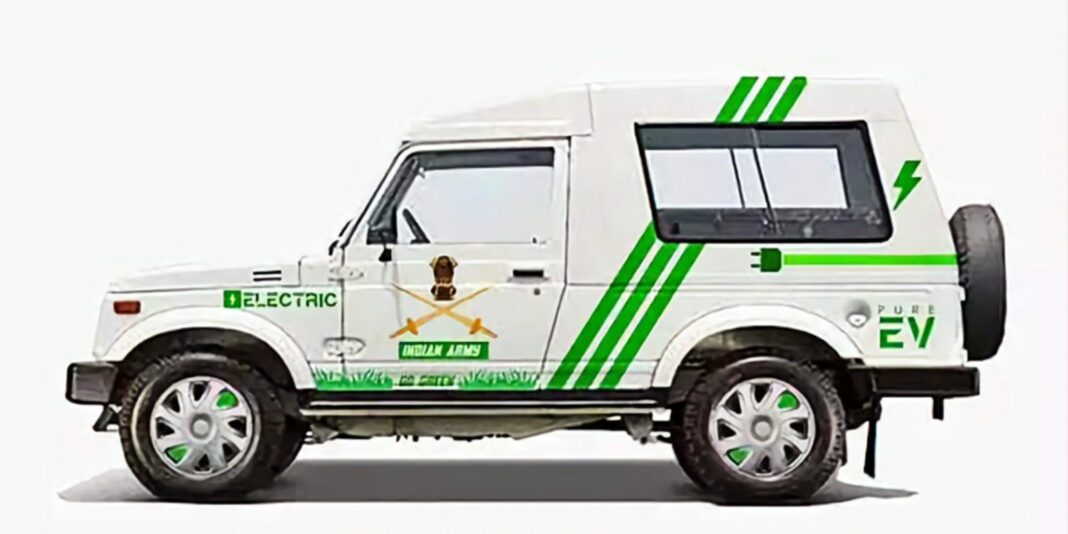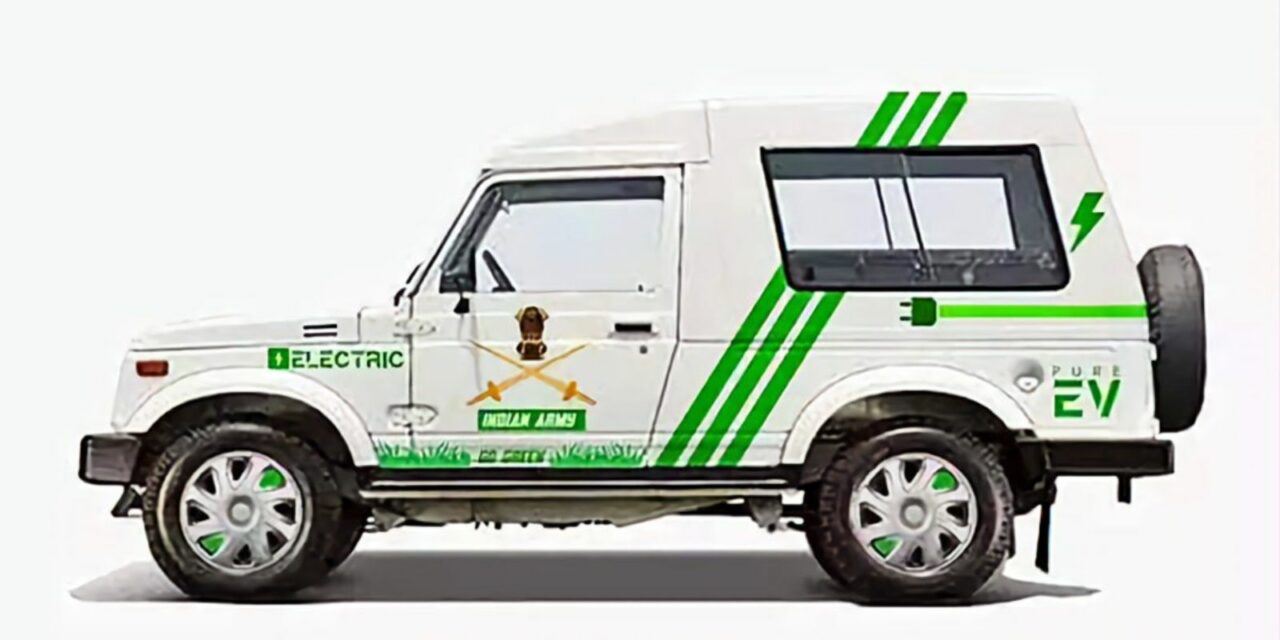
Maruti Suzuki Gypsy EV has been displayed at the Army Commanders Conference; the older Military Gypsies were retrofitted by Delhi-based Tadpole
At the Army Commanders Conference, the electric version of the Gypsy was showcased in its retrofit form. The project was taken up by Tadpole, which specialises in retrofitting passenger cars with electric powertrains as the Delhi-based firm has successfully put many zero-emission vintage vehicles on the road in India.
It provides a wide range of customised kits and batteries for a wide range of vehicles. It is said to retain the driving feel of the vehicle without changing the transmission while being eco-friendly. According to the brand, the in-house design team has put together all kinds of motors ranging from Induction motors, SRM Motors, PMSM motors to BLDC motors.
The power output ranges between 1 KW and 37 kW. The electric conversion kit is estimated to enable a carbon saving of 3.6 grams per km. It utilises a 30 kW kit in the Gypsy EV. Tadpole provides four different battery choices for its customers and two 48-volt EV architecture options. They offer high protection to avert short-circuiting and discharging.
The 1440 Wh module and 1536 Wh module along with a 60 V architecture with 1920 Wh module and a 72V architecture with 8640 Wh module are available with IP65/67 rating. Tadpole offers an electric motor warranty for two years while the warranty on the battery can be had for three or five years and it can also be extended to seven years.
The biggest advantage of retrofitting an existing or vintage car is that they do not have to be scrapped and its lifecycle is only extended. The 48 V enables a charging time of two to six hours while the 72 V has it at three to eight hours. Maruti Suzuki is expected to launch its first all-electric vehicle in India by the middle of this decade.
It will be underpinned by Toyota’s 27 PL architecture (based on 40 PL) as the flat floor enabled by the dedicated skateboard platform will also be used in Toyota’s derivative and it will more likely be an SUV. It could be manufactured in two-wheel drive and four-wheel drive configurations.

